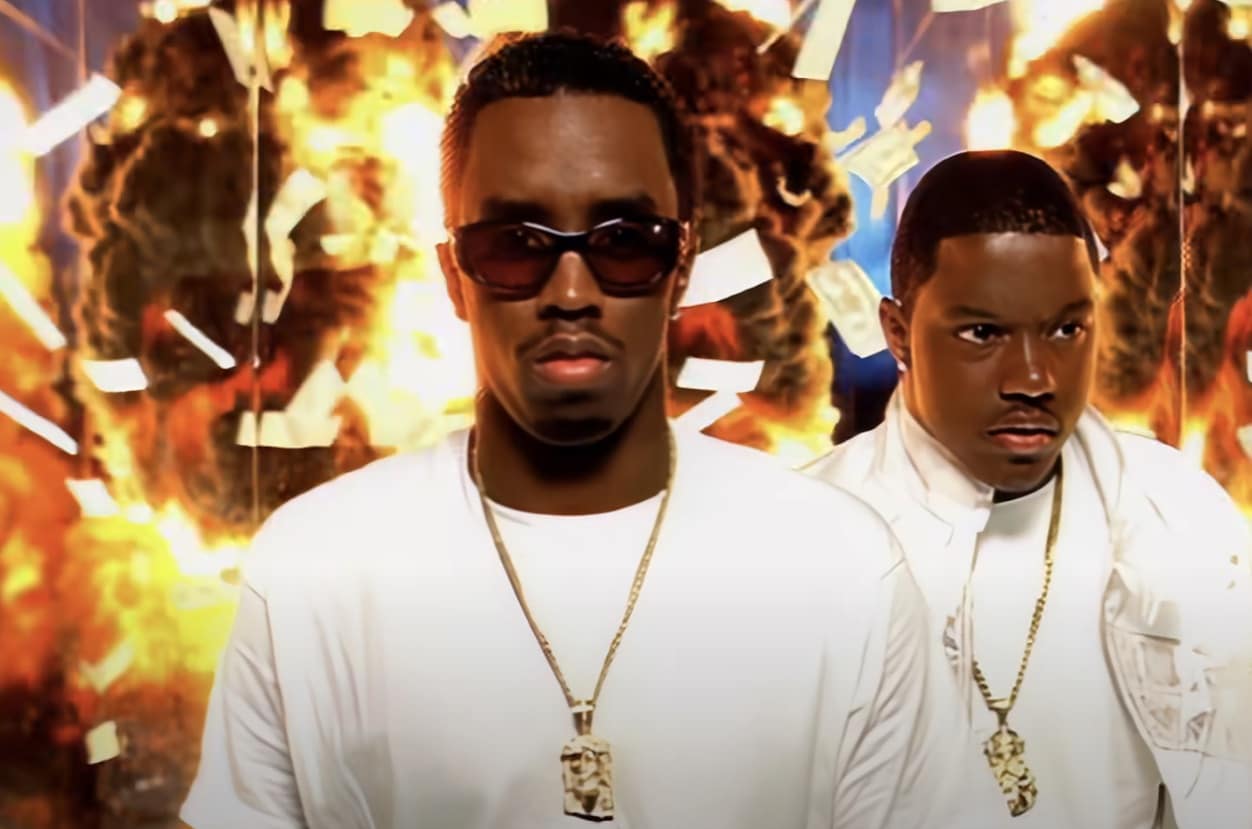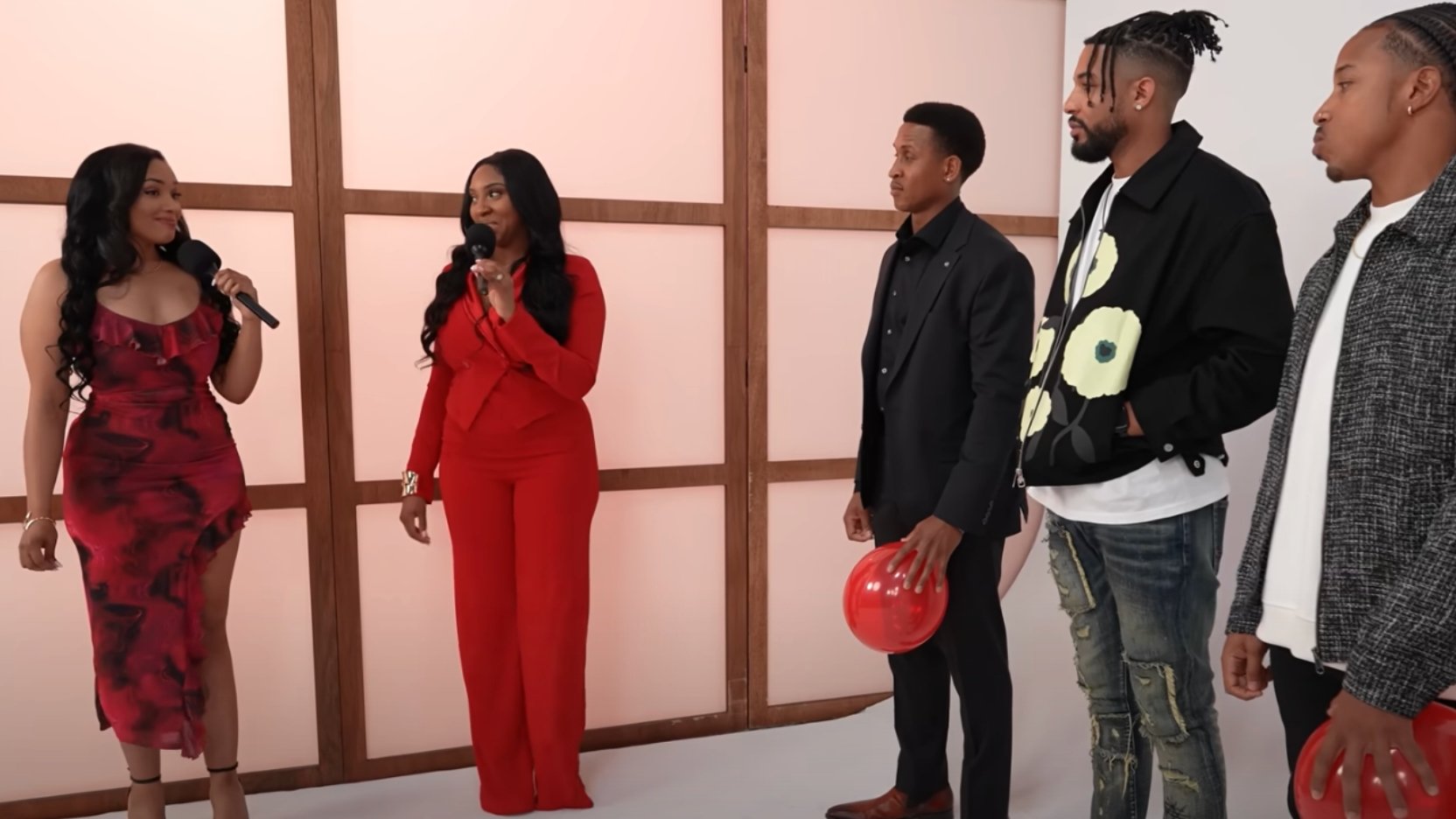If any Toronto Blue Jays player deserves a statue, it’s Joe Carter
TORONTO — By any measure, Rogers Centre is an incredible ballpark. Between field layout, playing surface, fan experience, clubhouse amenities and quality of food, it’s hard to think of a yard that definitively beats it on the continent. After the recently completed $400 million renovation that turned the facility formerly known as SkyDome into one [...]

TORONTO — By any measure, Rogers Centre is an incredible ballpark. Between field layout, playing surface, fan experience, clubhouse amenities and quality of food, it’s hard to think of a yard that definitively beats it on the continent. After the recently completed $400 million renovation that turned the facility formerly known as SkyDome into one of baseball’s modern gems, once you step through the doors of the Toronto Blue Jays ballpark, you’re in for an experience you won’t forget.
Outside, the grand plazas that surround the stadium in Ontario’s capital are wide open and welcoming, not unlike the country’s overall reputation as a nation. It’s a place that’s been home to some of the game’s greatest performances over the years, including this season, in which Vlad Guerrero Jr. has been on a generational tear the likes of which nobody around here will ever want to fade from memory.
But for everything that this organization and building has given the sports world, there seems to be one glaring omission at 1 Blue Jays Way. One would think that the player responsible for the most exciting moment in the history of the franchise would be commemorated in a way that any fan could gladly walk by and marvel at, even if they weren’t going to a ballgame. It’s a no-brainer that one of the most triumphant plays in the history of the game would have an unforgettable landmark, just yards from where it actually happened, right? Alas, soooory.
Joe Carter does not have a statue outside of Rogers Centre and he absolutely should.
The fact that he doesn’t is borderline ridiculous, considering that 32 years ago nearly to the day, the five-All-Star sent a towering three run shot off of Philadelphia Phillies reliever Mitch Williams to give the Blue Jays their second straight World Series title. Let me repeat, the man whose clutch pop gave an entire generation of baseball fans — never mind Canadians — one of the most iconic images of their lives does not have his image in bronze at the address where he etched the team into sports history.
Don’t get it twisted. There are plenty of Blue Jays who deserve to be enshrined outside of this ballpark. The late great Roy Halladay, who won a Cy Young and was a six-time All-Star as a Jays player comes to mind. As does Dave Steib, a seven-time All-Star who holds the franchise record for complete games, innings pitched and strikeouts. You could even make a case that Cito Gaston, the manager of those back-to-back World Series teams should be on that list — but he in fact belongs in Cooperstown, which is a whole other story.
There are many great players in the Jays Level of Fame, which has its names wrapped around the decks of the Rogers Centre 300 level. If you’re around my age, brothas like Tony Fernandez and George Bell come to mind as favorites. And Carlos Delgado and Jose Batista have done some incredible things north of the border.
But again, NONE OF THEM HAVE EVER HIT A HOME RUN TO WIN THE WORLD SERIES. It’s literally only happened one other time in Major League Baseball history. Bill Mazeroski did it with a leadoff homer in the ninth inning at the old Forbes Field in 1960, in a Game 7 no less. Yes, the Pirates have a statue of him — portrayed happily skipping around second base — at their newest field, PNC Park. He was 24-year-old at the time and the structure is a perfect embodiment of a kid having the time of his life.
The only other even remotely comparable baseball moment is when in 1996, LSU’s Warren Morris hit a two-out, first-pitch, walk-off squeaker of a homer at Rosenblatt Stadium to win the Men’s College World Series against the Miami Hurricanes. It’s considered the greatest moment in the history of the tournament. If you watch the highlight on YouTube, yes, that’s current Red Sox manager Alex Cora, lying in the dirt at shortstop as Morris rounds the bag, in complete disbelief. If you’re wondering, yes, there is a statue of Morris outside of Charles Schwab Field in Omaha where the tournament is held. And it’s the most popular site for photos at the entire facility, by a mile.
What makes the whole thing so confounding is that not only do zero Jays have edifices outside the park, but there is actually one single, solitary statue there. It’s of Edward S. Rogers Jr. He’s in a suit. Carrying a folder. Noble Canadian, surely. He’s the guy that TED Talks are named after. Exhilarating stuff, I know.
Ironically, for Carter himself, the home run is a weird reminder that one moment can define, even if you don’t want it to.
“One of the things it did on the negative side, it took away from what I had done the other years because when people first think of Joe Carter, they think of the home run, and that’s it,” Carter said before Game 2 Saturday, a 5-1 Blue Jays loss to the Los Angeles Dodgers. “So the 10 years of a hundred RBIs, those things, I think it diminished because they will think about just the home run, and I like to think that I was more than just a guy that hit one home run in the World Series. But on a positive standpoint, I mean, it’s what every kid dreams of. It’s what everyone sits there and thinks about. It’s only happened two times in the history of the game, and the first time it happened was the year I was born, 1960. And then it happens 33 years later. I say a lot of things about destiny. The bat that I hit the home run with, the model number was J93. So I look at it as Joe 1993.”
There’s another reason why putting up a statue for Joseph Chris Carter makes perfect sense. He’s just a great guy. In 2009, he organized a bunch of former players from that championship team to be honored at what was the then-SkyDome. Gaston threw out the first pitch and the old gang had a blast. Essentially, they all came because Joe asked them to.
In general, you’d be hard pressed to find anyone on earth who doesn’t like Carter — going back decades, well beyond his magic moment.
V.J. Lovero /Sports Illustrated via Getty Images

Phil Stephenson is taking a trip down memory lane after getting his license plates renewed, something that’s annoying him on this weekday morning. In his suburb of Wichita, a change in municipal operations now means he has to drive farther and wait longer to get them renewed, but he’s happy to talk about his old buddy on a fall afternoon.
“I played four years at Wichita State, I walked out of there with 13 different individual offensive record, NCAA offensive records, okay, of which five I still hold today,” Stephenson said. “I don’t know if I’d have them all if Joe would have hung around for one more year.”
Stephenson, whose older brother Gene was the Wichita State Shockers head coach for 35 years and led them to a College World Series championship in 1989, remembers meeting Carter back in high school in Oklahoma. They were rivals and ended up playing together in college, and even in the big leagues, something Phil considers to be incredibly neat.
“Joe might be the nicest guy I know. He’s always, he’s always had time for anybody that wants his time. Yeah, and he, you know, we, we kind of grew apart when pro ball. We both got into pro ball, but then we ended up being teammates in San Diego in 1990,” he recalled. “Just a great guy. I mean, like I said, we’ve known each other for so long, maybe, maybe the most kind of unassuming guy, you know, right? And, you know, I do a sports talk show here in Wichita. Since I moved back here four years ago, and he’s been on the show, we’ve talked about the home run to win the World Series with Toronto.”
He remembers where he was, just like pretty much anyone you ask anywhere in Toronto. But as a contemporary player to Joe, he was still sort of hanging on to his own career by the time Carter had made it up north. Seeing his old Shockers teammate go yard maybe gave him one last spark before he hung it up, himself.
“Believe or not, I was at home watching it on TV,” Stephenson, 65, said. “Ninety-four was my last year playing. So, ‘93, I’d been in the minor leagues, and I was at home, right? And I watched it all, probably jumped up and down just as much as he did.”
As for Phil’s brother, he remembers just being lucky that he ever even got the chance to coach the guy who was The Sporting News’ College Player of the Year in 1981. He didn’t even know the kid was going to be on the team. An assistant football coach at Wichita State, back when they had football, told him that there was a kid he saw on a recruiting trip that wants to play on the diamond there. That coach was Phil Fulmer (yes, that one). Only he had one problem: He didn’t have any scholarships left. Luckily, Carter actually was a decent football player.
The way Stephenson tells it, he says he straight up luckboxed into arguably the best player in the history of the program.
“‘Well, let me tell you something. He can play football for us,’ ” Fulmer said, according to Gene Stephenson. “‘He may not be able to play for OU, but he can play football for us right away, and we want to put him on a football scholarship.’ I said, ‘Well, let’s work. Let’s talk some turkey.’ So, the end result was that [Carter] came on a football scholarship, full scholarship, but whenever he decided that he didn’t want to play football anymore he wouldn’t have to play football. He could play baseball, and he would still keep his full scholarship.”
After a season of football for the now defunct program, Carter never looked back.
“He was a great kid from a great family, and all he wanted to do was go somewhere to play, and a good student did everything necessary to stay well, at top of his line,” the elder Stephenson, 80, said this week. “He wasn’t a marginal student at all. He was a good student, and he had great discipline. And you know, he would you as a coach, you always marvel at guys who go out on their own, aside from practice [to work on their game], because if they didn’t do something well, they wanted to be seen by their contemporaries as doing well.”
As for his now golfing buddy who he sees a couple times a year because he daughter lives near Carter, Phil’s thoughts on a statue for Carter are simple.
“It’s one of the biggest moments in the history of baseball,” Phil Stephenson said.
Tom Szczerbowski/Getty Images

Walking around the concourse at the World Series, you don’t see a ton of Carter jerseys, per se. There have been plenty stars since that day in ’93 and for a city that has just a touch of an inferiority complex about being in Canada with a sport based in the U.S., people take their starmaking very seriously. Meaning, the variance in jerseys in the park is about as wide as any team I’ve ever seen, never mind one in the World Series.
When you ask someone when and where they got the jersey, you see that glint in their eye, like Al Bundy telling you about his four touchdowns in one game, or Uncle Rico bragging about throwing a football over the mountains. And if they aren’t alone, you can always tell the other person has heard the story a million times before.
Standing in line to get new gear, one guy was willing to admit he bootlegged his Carter gear because he just had to have it. The story of him becoming a Blue Jays fan is long and convoluted as a kid from Ohio, but ultimately, it paid off.
“I was 15 years old, I was in my buddy’s basement, and his parents were upstairs rooting for the Phillies, because we lived in the States, and so they’re like, Well, you can’t read for a Canadian team. What are you? Some kind of a communist?” Chris Stedron, 47, said with a laugh in line for new merch along with thousands of his closest friends. They live in Ohio and traveled for this. “I remember like the off the bat, like he just knew it was gone. And I remember jumping, and we’re in that basement, my hands hit the drop ceiling, and we’re like, oh no. Like, we, you know, we broke my buddy’s basement, but, yeah, 15 years old. That’s like, a core memory.”
He’s so busy telling the story that he has to put down his rally scarf and hand it to his wife while he got animated.
“Have to have a statue. 100% Absolutely. It’s a crime [that they don’t.]”
When the Jays played Seattle in the ALCS, their fanbase was well represented, even thousands of miles away. They’ve long been Canada’s team, no matter where you live. Carter, among many greats on that team, including a 36-year-old Dave Stewart, who actually registered the win in that iconic game on the mound.
“I remember it like yesterday. I was sitting. I’m from Vancouver, okay? And I was sitting in my living room, on my living room couch. I know exactly where I was sitting. I knew. I know exactly which glove I had on my right hand,” Jag Ghumen who just turned 40, said, wistfully a couple hours before the game. “My wife got it for me a few years ago. Yeah, I was an unreal gift. But yeah, I remember it, like, just down the left field line. It was nuts. Honestly, it’s like one of the only things I remember from when I was a kid. So, very cool.”
For a certain subset of guys, Carter’s jersey is like a warm blanket from a part of their childhood that makes them feel like a kid again. In some cases, more so than themselves, they’ve actually passed that childhood memory down to their own kin, quite literally.
“I’m 42 [now] okay. I was like 10, sure, jumping up and down in my grandmother’s house. My parents were [out of town] at a wedding, so I’m jumping up and down, going nuts, loving every minute of it. It was phenomenal,” Justin Mastrangelo said, beaming in front of his wife and son, telling the story of his jersey. “I got this jersey probably 20 years ago.”
The white one, with the World Series patch on the left shoulder is a popular piece around here. A recollection of a simpler time, if you will. The kind of thing that people want to remember forever, one way or another.
“I knew when I was gonna have my first, my boy’s name would be Carter. I love the Blue Jays that much,” said Justin Mastrangelo, standing with his 9-year-old son, who was lucky enough to get a signed jersey from Joe at a meet and greet. The message he wrote on it was: Carter Meets Carter.
Win or lose the series, the memory of Carter with the red and blue Franklin batting gloves and high-top Nike spikes, fist pumping all the way around third with his helmet off is the Blue Jays for many baseball fans. But right now, the actual team has series to play, and Friday night’s 11-4 blowout in Game 1 certainly didn’t hurt.
“The Jays were 600-to-1 to win the World Series, I think, before the season started,” Mastrangelo said, just taking it all in. “Yeah, anything can happen at all times. It’s kind of nice to get a good clubhouse, good atmosphere, you know what I mean? And it’s pretty it’s pretty exciting to see kind of where they’ve come this far.”
When Carter Mastrangelo was asked if he’d ever seen the highlight of the guy he was named after, he gave the same answer as when his dad was asked whether or not a statue would be appropriate for Joe.
“Of course.”
The post If any Toronto Blue Jays player deserves a statue, it’s Joe Carter appeared first on Andscape.
Share
What's Your Reaction?
 Like
0
Like
0
 Dislike
0
Dislike
0
 Love
0
Love
0
 Funny
0
Funny
0
 Angry
0
Angry
0
 Sad
0
Sad
0
 Wow
0
Wow
0
















